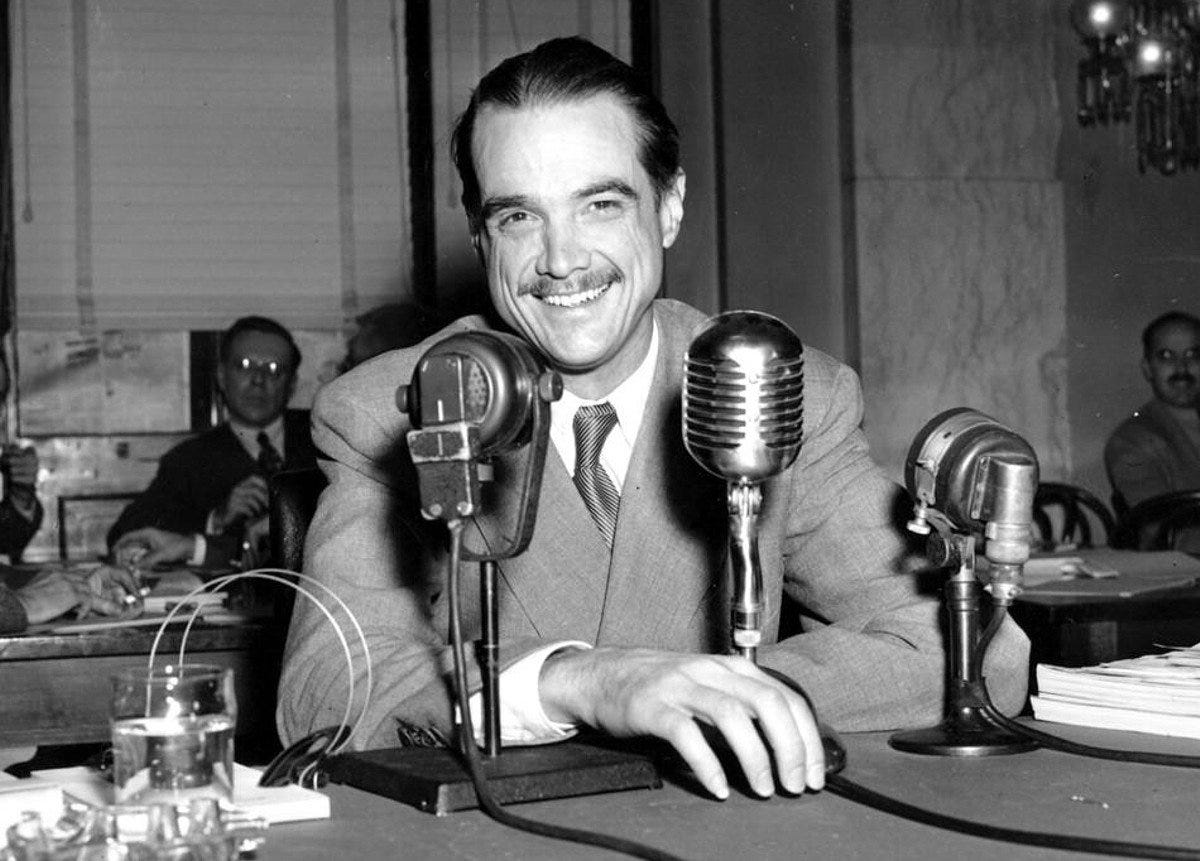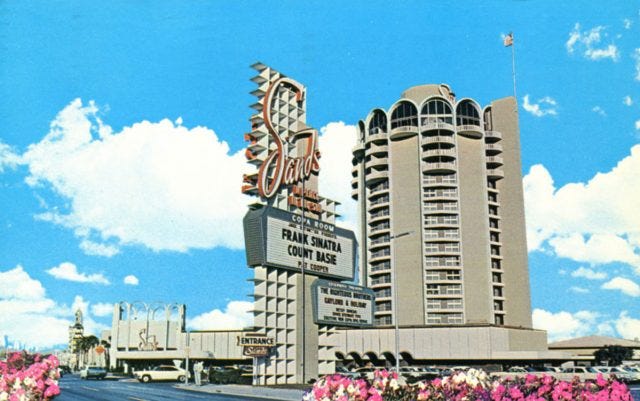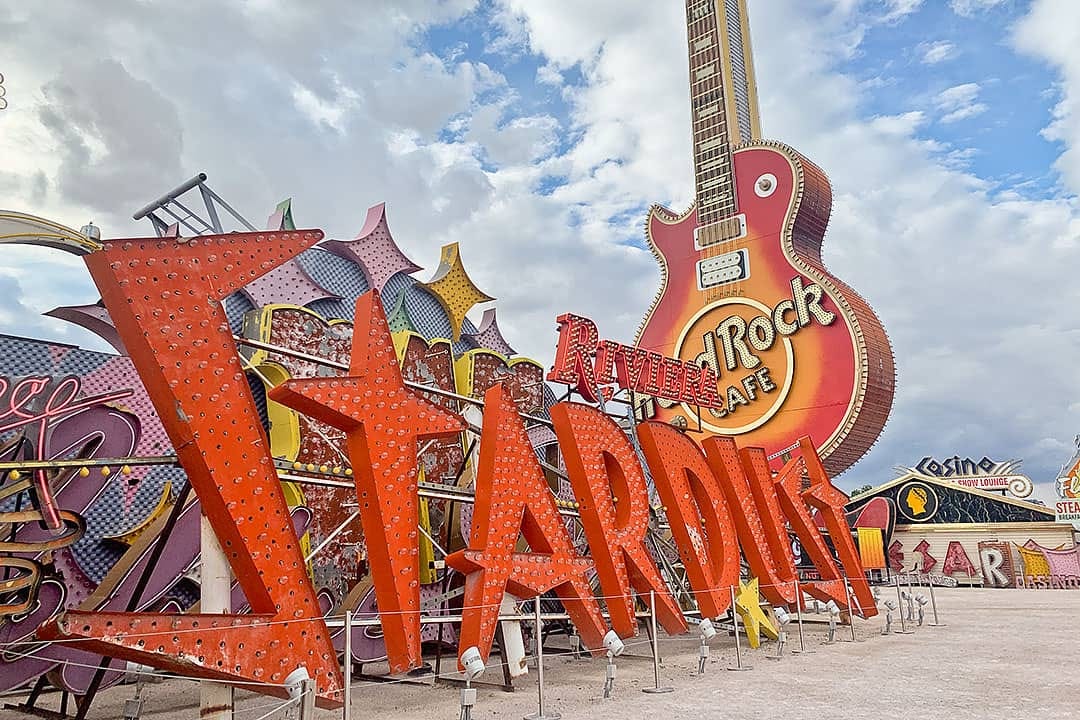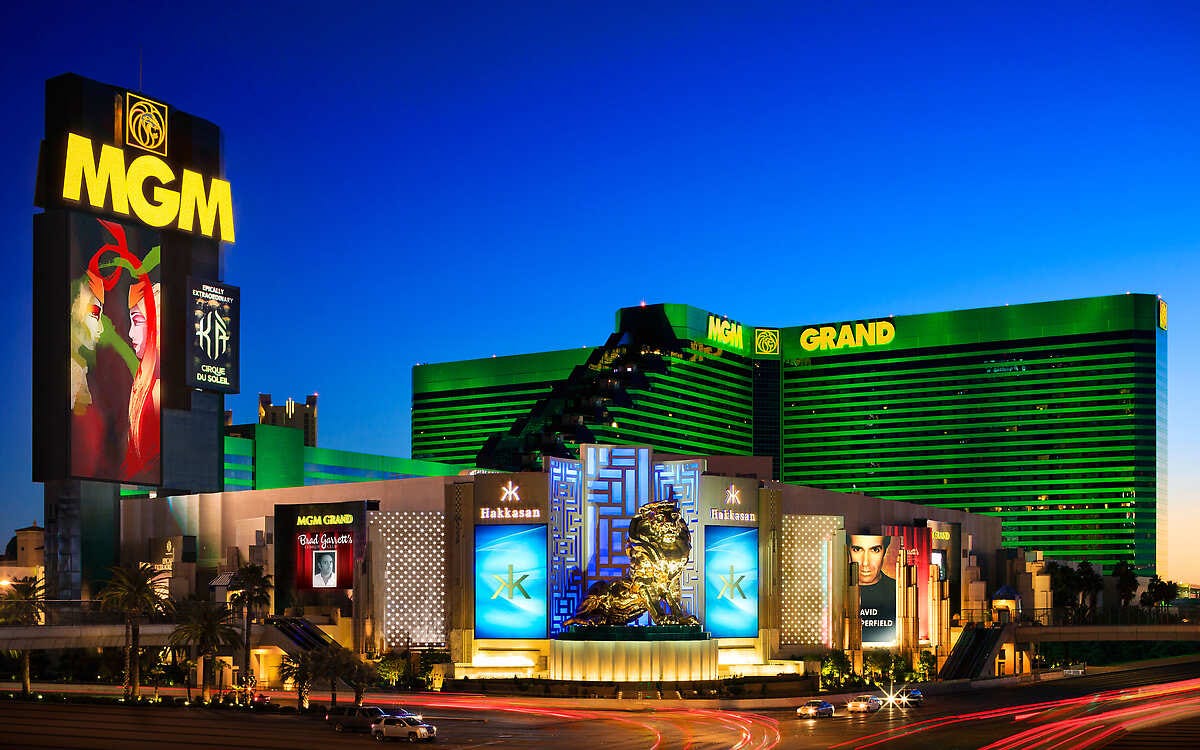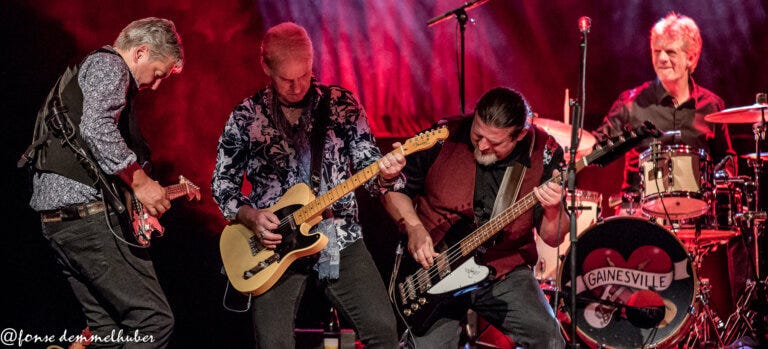The DEC4 Podcast Companion: Gary Wells (Part II) - From Memphis to Vegas: A Vintage Leisure Tour
Discovering Vintage Las Vegas
The second part of our special extended DEC4 Podcast episode, featuring Gary Wells, brings us from Memphis to Las Vegas, as we explore how the city has transformed over the latter half of the twentieth century, and what might still be there for the ‘vintage leisure’ tourist.
Initially a desert stopover and watering station for the San Pedro, Los Angeles and Salt Lake Railroad, Las Vegas, Nevada, was founded in 1905 and incorporated in 1911. It is around 270 miles northeast of Los Angeles.
The Golden Gate Hotel and Casino, initially the Hotel Nevada, was the first such establishment in Las Vegas, five years before the city was incorporated, and is still operating. Read about its eventful history here;
https://www.goldengatecasino.com/our-story/
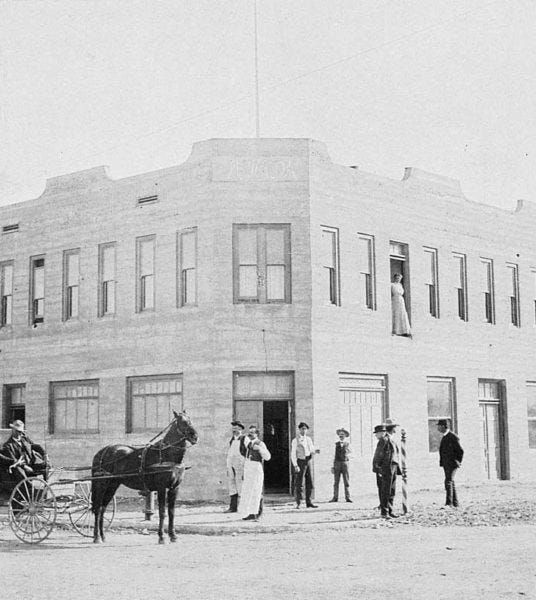
The first official gaming licence was issued in 1931, as the population boomed thanks to the construction of the Hoover Dam. The first of the modern themed casino resorts began to appear in the early 1940s; the iconic Flamingo opened in 1946, the Desert Inn in 1950, and the Sands in 1952.
Read more on the history of Las Vegas at
https://www.lasvegasnevada.gov/Residents/History/Timeline
The embedded presence of organised crime is a significant part of post-war Las Vegas history, and in 1950, Senator Estes Kefauver of Tennessee (1903-1963), convened his historic Special Committee to Investigate Organized Crime in Interstate Commerce at the Post Office-Courthouse complex (now, appropriately, the The Mob Museum). Las Vegas was one of fourteen cities in which the committee was taking evidence, however many of Kefauver’s targets, including Desert Inn owner Moe Dalitz, were conveniently out of town on the day of the hearings. As a result, only four of the 11 000 pages of the committee’s report related to Las Vegas. There is more on the Kefauver Committee, and its unintended consequences for Las Vegas, thanks to PBS:
Las Vegas: An Unconventional History.
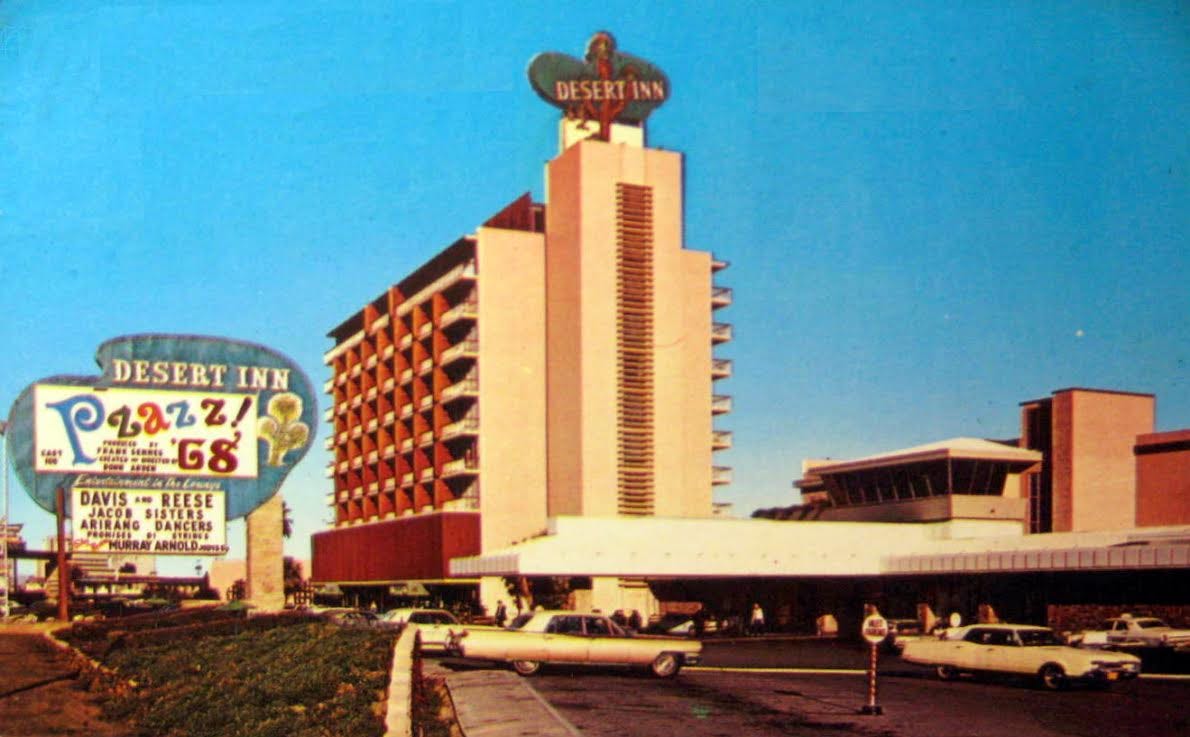
From the mid-1960s, an influx of major corporate investment, spearheaded by tycoons like Howard Hughes, Kirk Kerkorian and Steve Wynn, corporatised the ownership of many of the hotels and casinos, and the underworld influence waned.
According to American Experience (PBS);
“…On Thanksgiving Day in 1966, Howard Hughes, one of the wealthiest men in the world, arrived in North Las Vegas via a private train. He was placed on a stretcher, put into a van, and ushered to the Desert Inn on the Strip, near where he had lived in 1954. His friend, Hank Greenspun, had reserved the top two floors of the hotel's penthouse suites for Hughes and his entourage of Mormon assistants, lawyers and Robert Maheu, his chief of security. For four years, Hughes remained in the city, not once leaving the confines of his suite. In those four years, Hughes would become Nevada's largest private employer, largest casino owner, largest property owner and largest mining claims owner. More importantly to Las Vegans, Hughes' presence would help to soften the image of Las Vegas in the eyes of the general American public, making way for the city's corporate, mainstream era…”
Professional hotel managers like Alex Shoofey became highly sought after; by 1967 he was running the Flamingo, by this point owned by Kirk Kerkorian, and within a year turned a 25 million dollar deficit into a 15 million dollar profit by keeping a tight rein on every aspect of the hotel and casino operations. It was now all about the stockholders, rather than syphoning money off the top for some old friends and associates in the Midwest and New York. Shoofey was the inaugural president of the International Hotel, initially also owned by Kerkorian, and astutely ensured Elvis was tied to a long term contract, overcoming Colonel Parker’s hesitancy, and thereby changing the face of Las Vegas entertainment while guaranteeing a full hotel, packed showrooms and endless profitability for years to come.
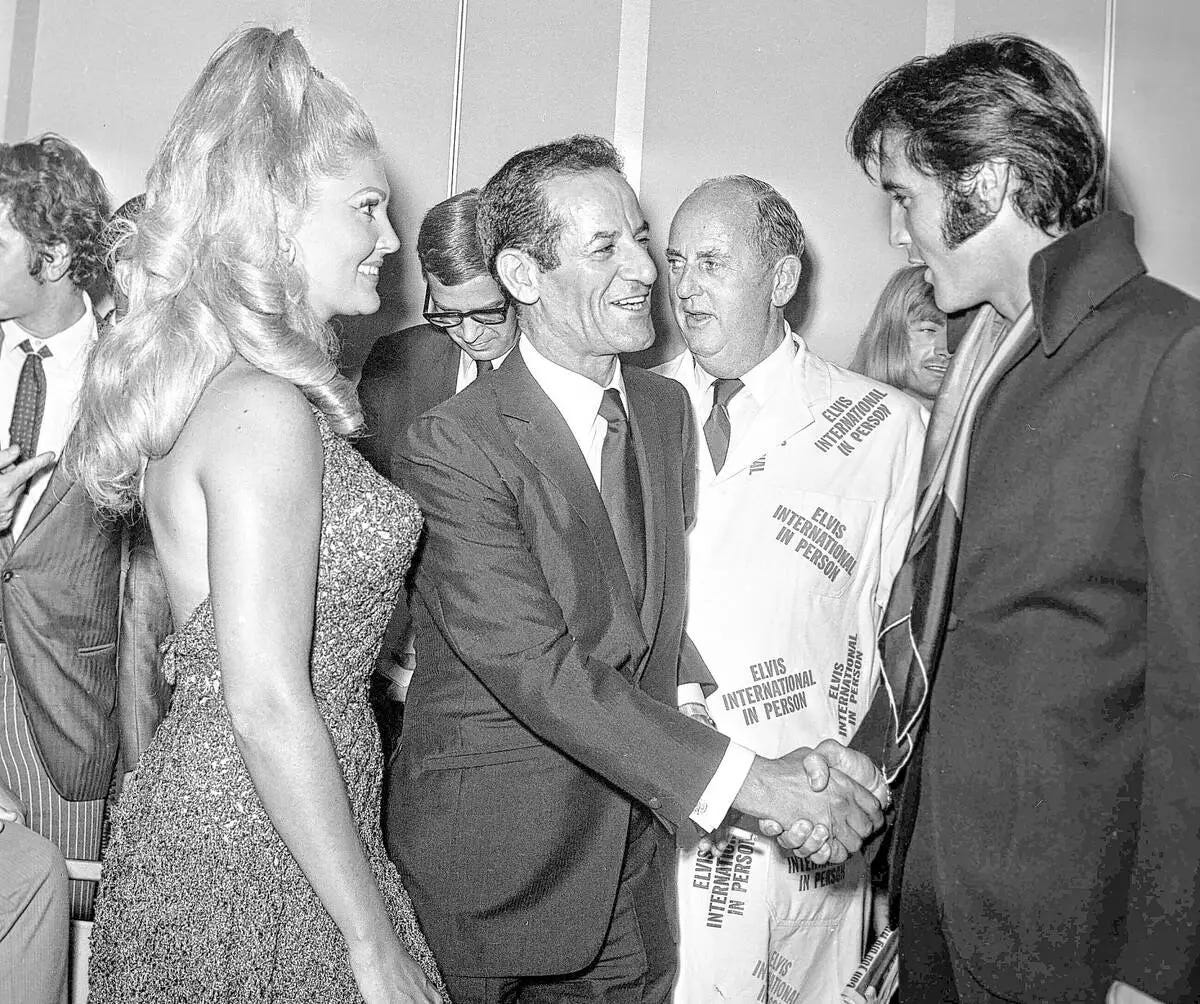
According to the Las Vegas Review-Journal;
"...Shoofey wasn’t able to convince Presley’s manager, Colonel Tom Parker, to let the singer open the new Showroom Internationale. Instead, he booked Barbra Streisand, then a 27-year-old rising singer, to perform on opening night...Presley began a four-week engagement at the resort at $100,000 per week on July 26, 1969. After a successful opening, Shoofey and Parker negotiated a new deal to book Presley four weeks a year for five years at a salary of $125,000 per week...Shoofey called it 'the best deal ever made in this town'..."
Gary tells us that some tangible traces of the old Las Vegas can still be found, but you need to seek them out. The Golden Steer Steakhouse is a case in point. According to their website:
“…From Elvis, Sinatra and Muhammad Ali to modern regulars like Mario Andretti, anyone who’s anyone has eaten at the famous Golden Steer Steakhouse - Las Vegas' oldest steakhouse. When you walk through our doors, you are instantly transported back in time with red leather banquettes, intimate lighting, and old-west art…”
The Neon Museum houses many of the old Casino signs, and some old-school Vegas can be experienced at Atomic Liquors as well as the Peppermill Restaurant, which claims to ‘proudly remain as an iconic reminder of the Vegas Strip the way it used to be’.
Kirk Kerkorian (1917-2015) was, along with Howard Hughes, a key force in the early corporatisation of Las Vegas. The son of Armenian immigrants, he sold his successful air charter business and began buying up Las Vegas real estate in 1962. He famously purchased the failing MGM studios in Culver City, once the dominant prestige studio in Hollywood, which led to a number of complex corporate plays over the ensuing years. Some of these back-and-forth manoeuvres also involved Ted Turner and United Artists, and the final outcome was that what remained of the depleted MGM studio facilities in Culver City were sold to Lorimar Telepictures while Ted Turner secured the best of the film library (Turner Classic Movies). Kirk Kerkorian ended up with an iconic brand, synonymous with the glamour and allure of golden age Hollywood, to put to work in his growing leisure and hospitality businesses, issuing a press statement in 1979 to the effect that MGM was, by that point, primarily a hotel company.
Perhaps the ultimate example of Las Vegas’ transformation is the Bellagio. According to onthestrip.com (Link to read the complete article);
“…The Bellagio was originally the site of the legendary Dunes hotel and casino, which sold for $75 million in 1993 to Steve Wynn. Wynn, later owner of MGM Resorts, teamed up with Atlandia Design, owned by Mirage Resorts, and started crafting a modern model of the Northern Italian town of Lake Como, which it was named after. Dunes was demolished in October of 1993, shortly after Mirage celebrated success with the opening of their Treasure Island hotel on the strip…The plans were elaborate, estimated to cost nearly $1.6 billion, which made the Bellagio one of the most expensive hotels ever built at the time of its construction in May of 1996...”
For some additional learning, the BBC World Service documentary Las Vegas Stripped Bare is thoroughly recommended. It can be streamed or downloaded as a podcast.
We do hope you’ve enjoyed this journey through Memphis and Las Vegas with us.
Huge thanks to all our readers and listeners this year. Thanks also to our sponsors and supporters; Gainesville, Steve Collins, tellmewheretogo.com and the Armstrong and Burton book series.







